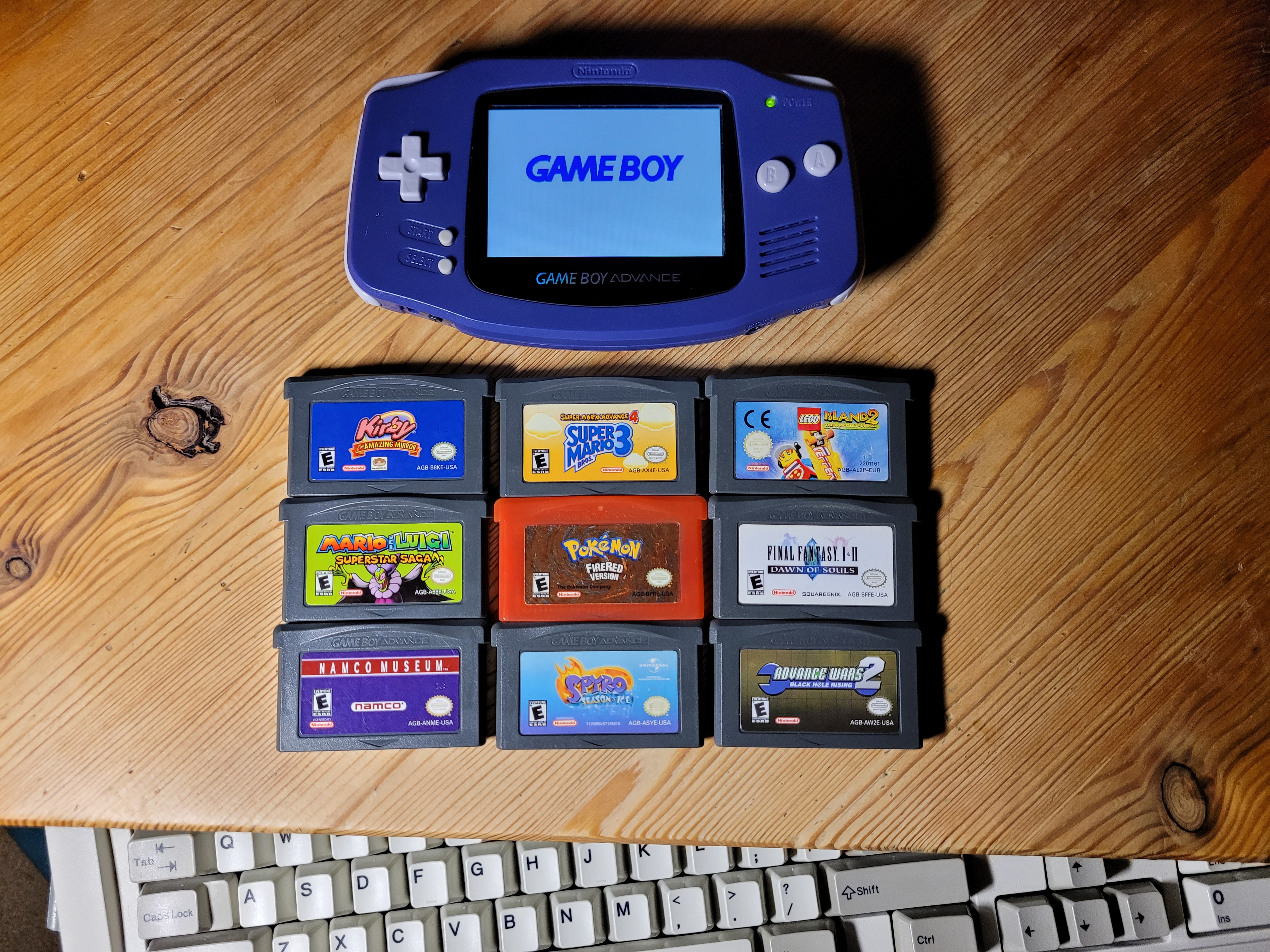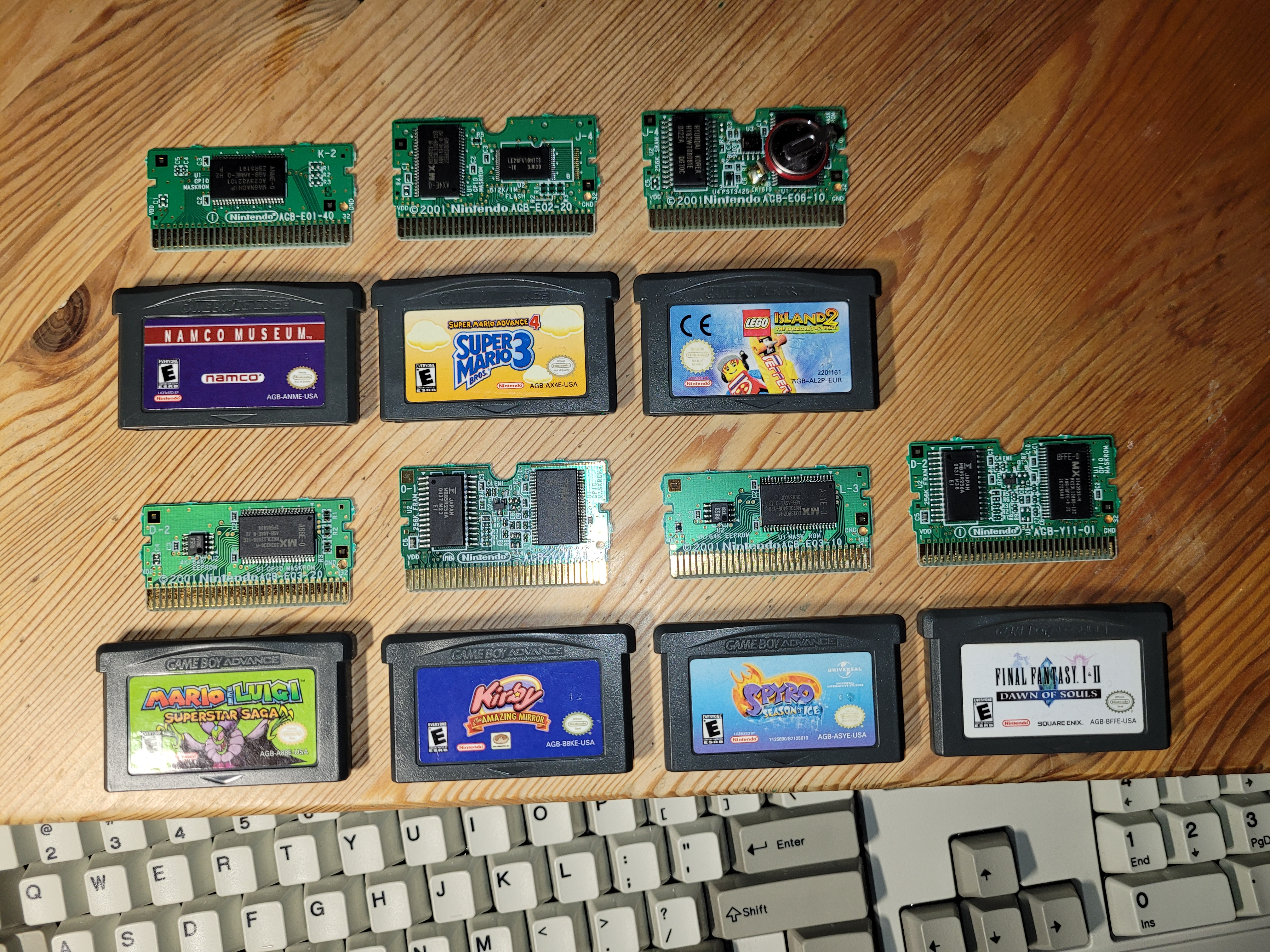The first step in the process was disassemble the GBA and clean it. While I had only owned my GBA for about 2 years by this point I bought it used and came with a non-zero amount of free grime from the previous user. Once I had cleaned out the inside of the case and mainboard with isopropyl alcohol I could being the mod. The new Backlight LCD had an interesting way of connecting to the display output of the mainboard. A ribbon cable with a section that is also a flex PCB attached to the video output of the GBA's PCB. On the flex PCB of the modded video ribbon cable there are multiple ICs that are used to pixel double upscale the image, and any other signal processing needed to get the image to properly display on the new LCD. The worst part of this mod is the tiny and nearly impossible to attach connecter from the flex PCB to the LCD. Luckily once its connected there isn't a ton of need to remove it or reconnect it.
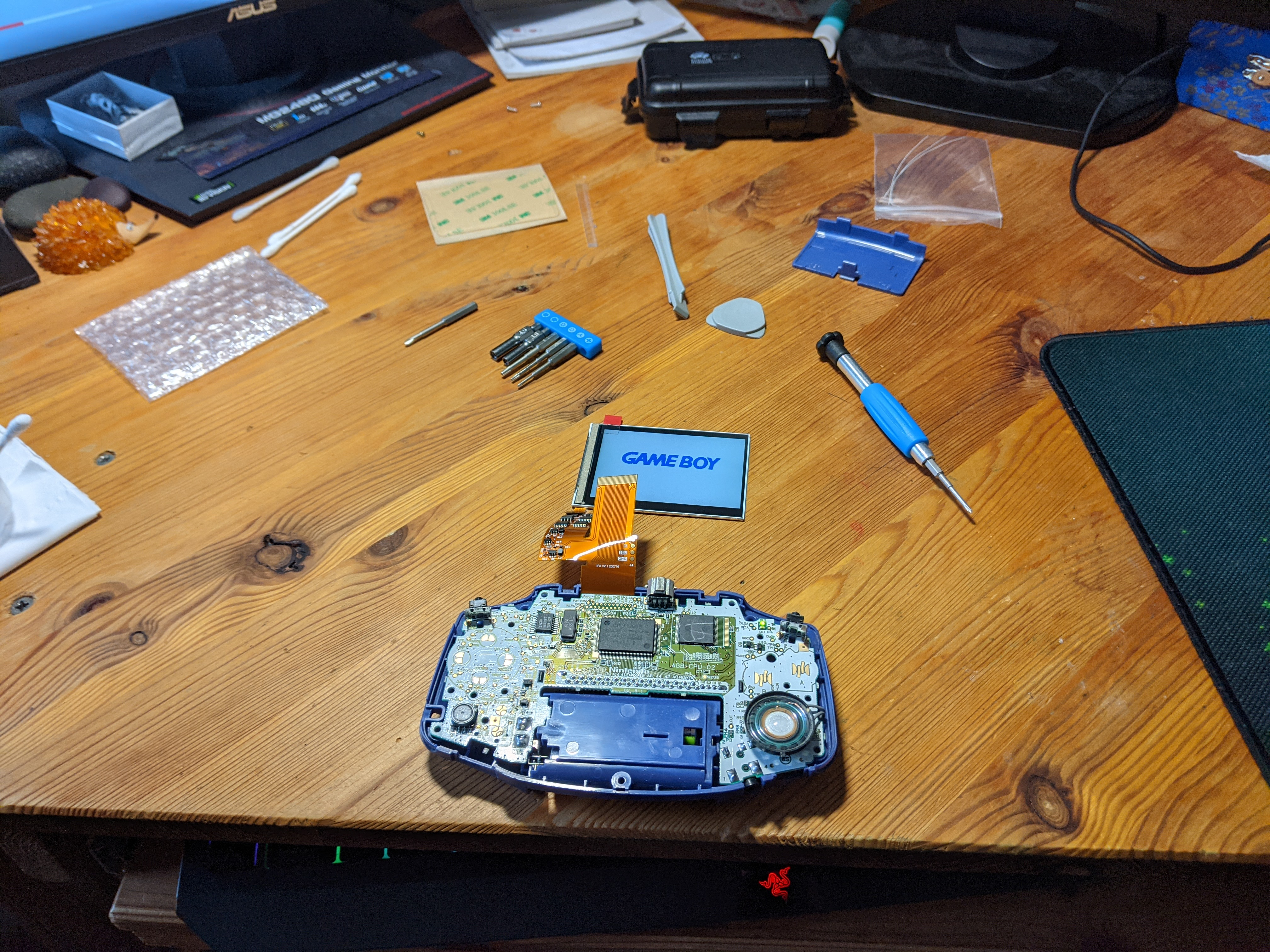
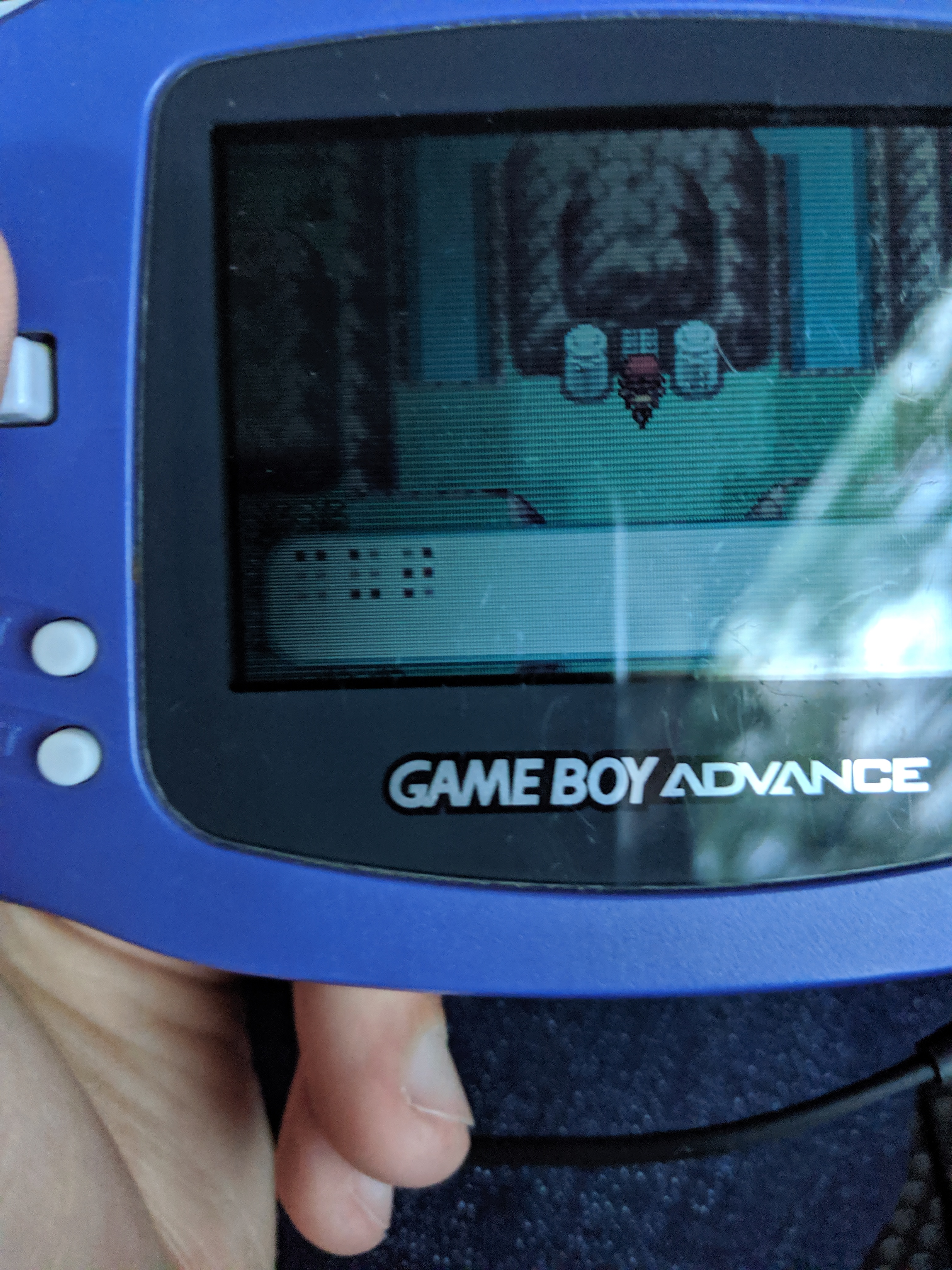
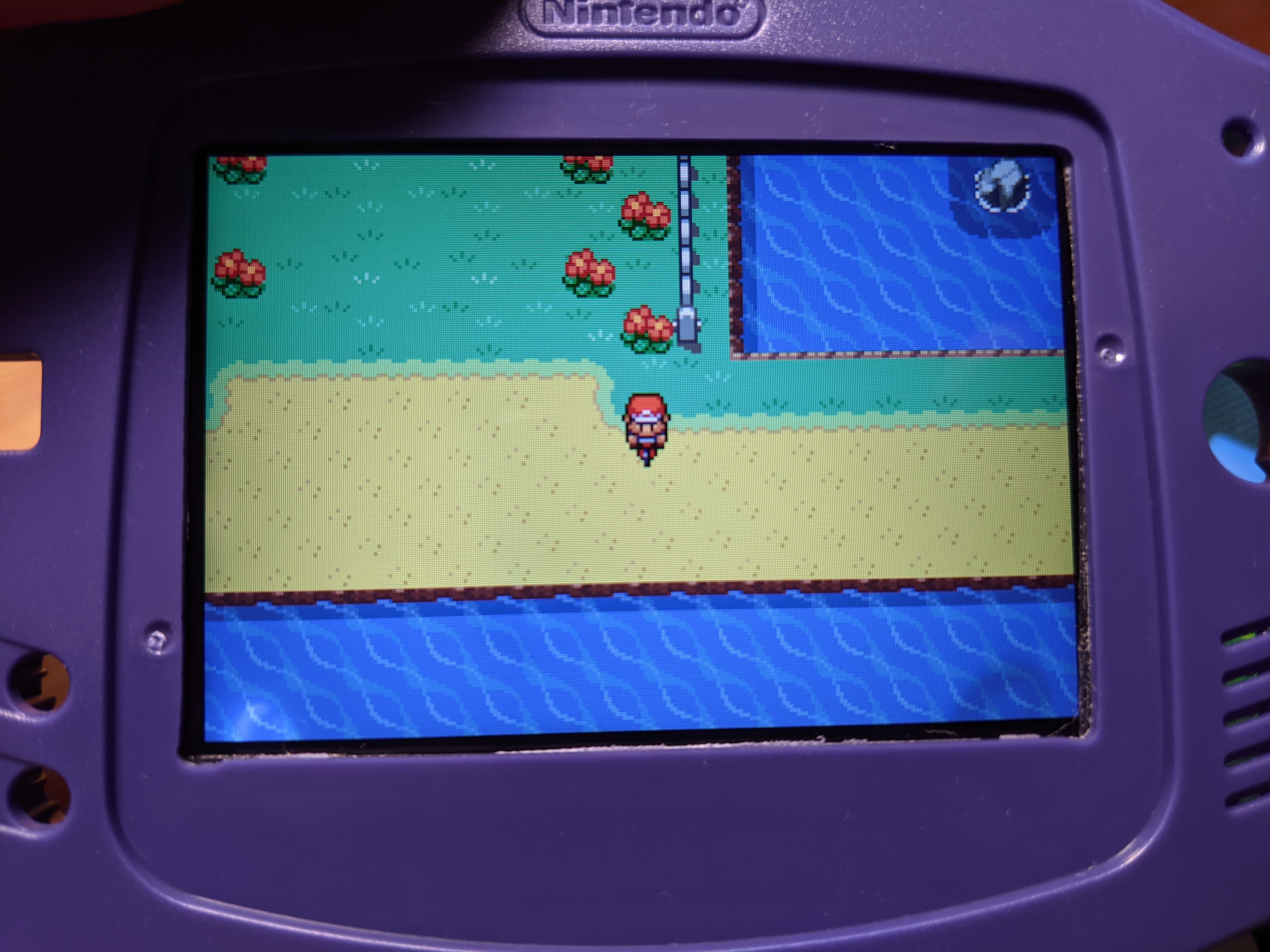
I was very happy I went with a new shell because it means I didn't have to destroy and mod the original shell for my GBA. This means if I ever want to restore the GBA to an original state with the original display and unmodded case I can do so because I kept them both. The new shell has a really nice colour matching of the indigo hue of the original GBA shell. I am able to notice a difference in the grey buttons but it might also be that they just seem newer. Another bonus of the new shell and display and glass cover is that there are no scratches on it now! Once I confirmed it worked I solder on two tiny wires to the flex PCB once each to a pad near each of the Left and Right shoulder pads. This allows me to control the brightness of the display by pressing Select+L to raise the brightness Select+R to lower. This is actually the project that inspired me to learn how to solder. Then I reassembled the rest of the shell and began enjoying the new backlight LCD.
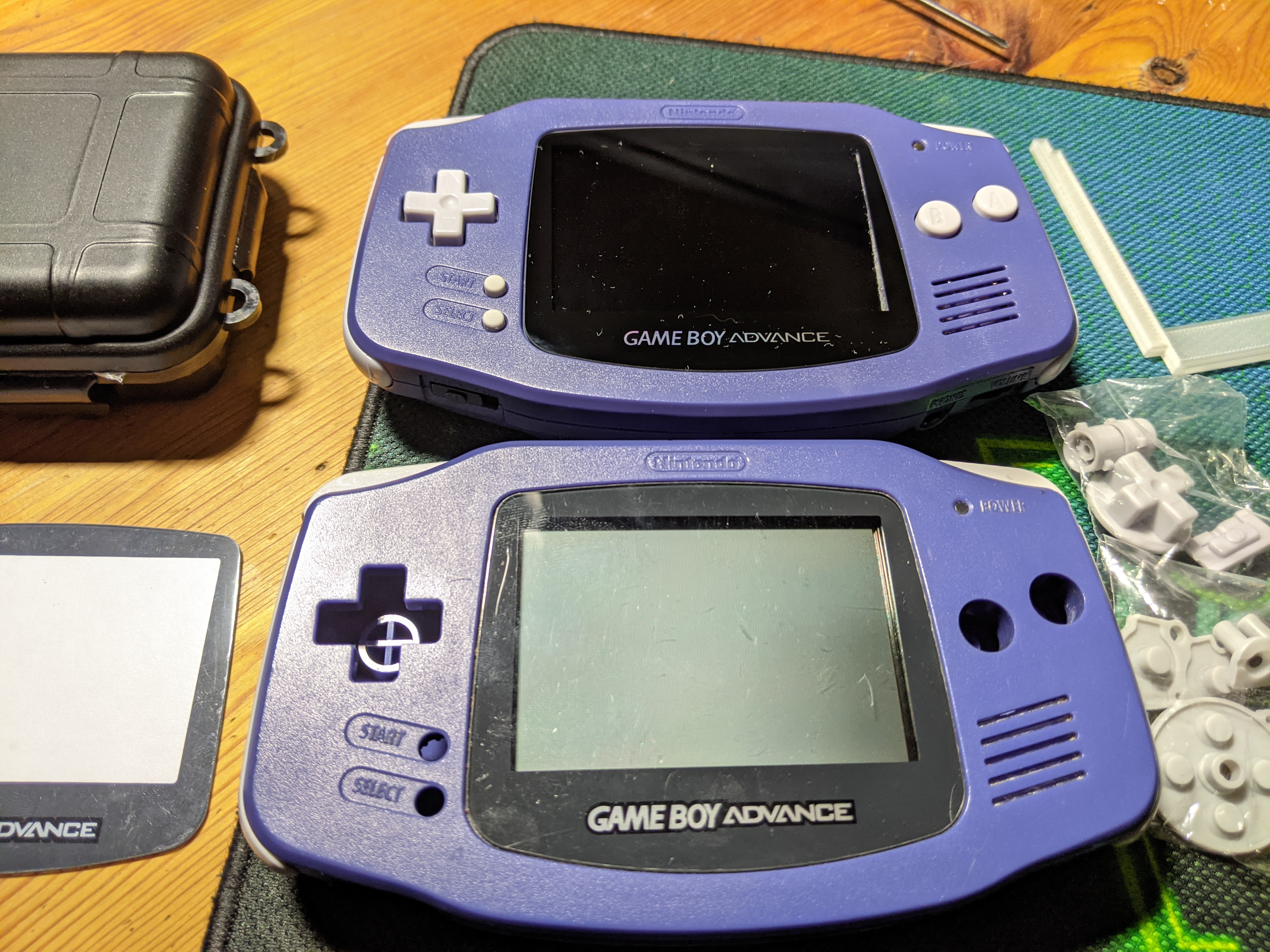
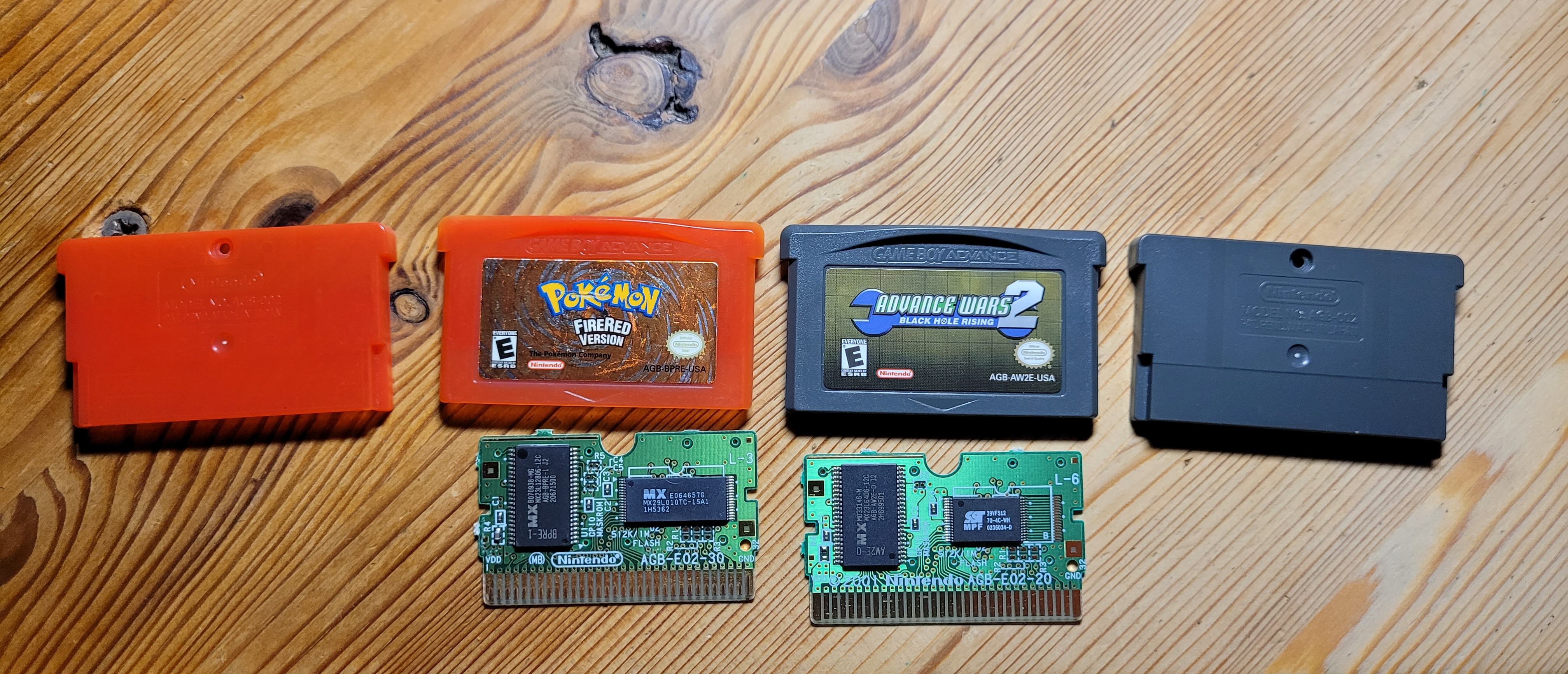
As a part of my GBA modding and cleaning journey I also opened up some game cartridges just to take a peek. Seen here are the insides of Pokémon FireRed and Advance Wars 2. Both of which are fantastic games I must add. What is interesting to note is that there is not much going on here, just two ICs and that's it. There aren't any other components on the back either.
